Ayurveda
Discover Ayurveda
 Ayurveda - the oldest of the surviving comprehensive medical systems in the world. Its name is formed from two roots in the land of ancient language - Sanskrit: "ayuh"(long life) andveda(knowledge). Ayurveda offers a complete deep meaning in-depth knowledge about a healthy lifestyle and outlook on how to be in harmony with nature. It originated more than 5000 years ago when it was discussed in detail and apply the same holy sages - the rishis, who laid the foundation of the Vedic civilization in India, has formulated and issued the basic principles of life into proper systems of philosophy.
Ayurveda - the oldest of the surviving comprehensive medical systems in the world. Its name is formed from two roots in the land of ancient language - Sanskrit: "ayuh"(long life) andveda(knowledge). Ayurveda offers a complete deep meaning in-depth knowledge about a healthy lifestyle and outlook on how to be in harmony with nature. It originated more than 5000 years ago when it was discussed in detail and apply the same holy sages - the rishis, who laid the foundation of the Vedic civilization in India, has formulated and issued the basic principles of life into proper systems of philosophy.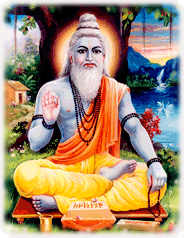
For this reason, the main source of knowledge in this field remain the Vedas - compiled by these wise men of the divine books of knowledge, which they received as a revelation of God, and, particularly, the fourth of the Vedas - Atharvaveda, a final written fixation which is roughly the first millennium BC .The most famous of the few other treatises on Ayurveda, written around the same time and come down to us - "Charaka Samhita"and"Sushruta Samhita", which are devoted to care (internal medicine) and surgery, respectively. "Ashtanga hridayam"- is an abbreviated compilation of previously written texts, which was created about a thousand years ago. These works form the largest part of the basic knowledge of Ayurveda in the form in which it is practiced today.
The art of Ayurveda is widely spread in the sixth century BC, being brought to Tibet, China, Mongolia, Korea and Sri Lanka Buddhist monks who traveled to these countries. Although not much of all this came to us in their original form, the influence of these early practices can be seen in the different concepts of a new era that arose from them.
No philosophy has not had such a great influence on Ayurveda as a philosophy of Samkhya, which describes the creation and manifestation of the universe. It shows that for all of creation is a state of pure existence or awareness which is beyond time and space, has no beginning or end and no qualities. Inside this clean, being a desire to get the experience itself, which results in disequilibrium and causes the manifestation of the primordial energy.And the two started together in order to implement and to give life "dance of the universe."
Elusive, indescribable and extremely subtle, this primordial energy - and by itself, and all that follows from it - there is only pure being, and is the creative force of any and all actions, the source of form that has qualities. Matter and energy are so closely interrelated that when energy takes form, we tend to consider it only in terms of matter. And, significantly modified, it ultimately leads to the manifestation of the known mental and physical plans of the universe.
It also causes the cosmic consciousness, which is a universal order, the piercing whole life and all living things. Individual minds, in contrast to the ordinary intelligent mind, comes from this awareness and is a part, or aspect.This - the inner wisdom of the personality, which remains unaffected demands of everyday life, or Ahamkara, a sense of ego, or the principle of "self."
The Sanskrit word Ahamkarafor which there is no exact translation, is a concept not quite understood by all, since it is often erroneously equated with the concept of "ego". Encompassing much more than just that, she, in essence, is the part of 'me' which knows which parts of the universal creation are 'me'. And this "I" is not something separate from the universal consciousness - it has a certain personality identity, which separates and defines the boundaries of "me". For this reason, not only people but also all originated in the world has Ahamkara.
From Ahamkara appears ambivalent generation. First - this is sattva, the subjective world, which is able to perceive the matter and to manage it. It comprises the subtle body (mind), the ability of the five senses to hear, touch, see, taste and smell to distinguish and five organs of action to say handle arms, walk, procreate and excrete wastes. Mind and subtle bodies, providing a bridge between the body, Ahamkara and inner wisdom - these combined together constitute the three dimensions of human nature.
Second - this is tamas, the objective world of the five elements of sound, touch, sight, taste and smell - the five subtle Elements that generate dense elements of ether or space, air, fire, water and earth, and from which all matter is formed of the physical world. And it is - Rajas, the force or energy of motion, which connects the parts of those two worlds.
Resilient element | Thin element | Sense organ | Motor Authority | Function |
Space | Sound | Ears | Vocal cords | Voice communication |
Air | Touch | Leather | Hands | The arms |
Fire | Vision | Eyes | Feet | Walking |
Water | Taste | Language | Genitalia | Procreation |
Land | Smell | Nose | Anus | Excretion |
It is worth noting that even at the stage of dense elements the philosophy of creation - which, according to Samkhya holds only now, at present, without any past and future - is still dealing with aspects of existence beyond our simple physical plan of creation. Point here is that we - first and foremost spirit, receiving the experience of existence, being. To use Ayurveda in daily life, one does not need neither accept nor even understand this philosophy. But it provides a better understanding of how Ayurveda helps to improve your health.
Hence, Ayurveda - not just health care system, and the shape of lifestyle adopted to maintain perfect balance and harmony within the human existence, from the most abstract transcendental values to the most concrete physiological expressions. Ayurveda is based on the premise that life represents an intelligent interaction Atma(Supreme Soul), Manas (mind), indriyas (feelings) and Sharira (body). They are the focus of the five dense elements that are involved in shaping the constitution of each individual, called Prakriti. She, in turn, is determined by the balance of vital forces of the three physical energies - wool, Pitta andKapha and the three mental energies - Sattva,Rajas and Tamas. | 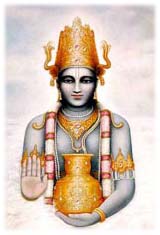 Deity of medicine in Hinduism - Lord Dhanvantari |
Thus, Ayurveda offers a unique synthesis of science and philosophy, which leads to the harmony of physical, mental, emotional and spiritual components necessary for health in a holistic approach.
Discover Ayurveda
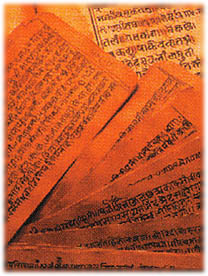 History of Ayurveda
History of Ayurveda Ayurveda is proud of its long history, going back to Vedic times, more than five thousand years ago. No other branch of science has not kept such ancient texts, which are still used in Ayurveda.
Ayurveda is mentioned in the Vedas, Upanishads, Mahabharata, Puranas, Tantras and Yoga-shastra. She practiced and practiced by Buddhists, Jains, Sikhs and Hindus, and forms the basis of Tibetan medicine. Many modern masters such as Sri Aurobindo, Swami Sivananda, Paramahansa Yogananda, and others, spoke respectfully about Ayurveda and encouraged her to study to their students.
In the countries of antiquity (such as Mesopotamia and Egypt), the art of healing disease was the prerogative of the clergy. While clergy and priests, indeed, heal the body, their primary responsibility remained the spiritual work with the disease, because of religious and medical practice was dominated by strict religious facilities. From this perspective, treatment of the physical body has always been a consequence of the healing of the spirit.
Here are the possible causes of diseases, which were pointed out by the priests: (a) the gods punished for sins committed, and (b) falling under the sway of an evil spirit, (c) okoldovyvanie, corruption, evil eye. An ancient text Atharvaveda indicates required mantras and spells, effective in the cases described above.
Just as Western medicine is based on the tradition of Hippocrates, ayurveda is a part of the ancient doctrine of the chain of succession.Followers of the tradition believe that the supreme creator Brahma himself inspired by the wise compilation of the Vedas, which is part of Ayurveda.Therefore, the Vedic scriptures are regarded as an eternal source of knowledge. Thus, the Ayurvedic scriptures - the oldest known people to medical sources. The most important emphasis is that this knowledge should be used to benefit humanity.
| The sacred texts of Hinduism | |
| Shruti (Main text) | Smriti (Additional text) |
| Rigveda | Dharma-shastra - "Laws of Manu," "Laws of Yajnavalkya" |
| "Samaveda" | Puranas |
| "Yadzhurveda" | Agamas or Tantra |
| "Atharvaveda" | Vedanga, Upavedas |
| Bhagavad-Gita " (Part of the epic "Mahabharata") | Nibhandy |
| Epic tales - "Ramayana", "Tripura Rahasya", Mahabharata, Srimad Bhagavatam | |
| Darshan | |
Here are the names of famous teachers of Ayurveda: Charak, Sushruta, Vagbhata, Atri. Along with intensive study of biology and botany of these masters was a perfect master of yoga, which is part of the Ayurvedic medical practice. Ayurveda is aimed at finding a balance and harmony between man and the world in which he lives. The fundamental principle of Ayurveda - prevention is more important than treatment.

The ancient sages and seers believed health an integral part of spiritual life. It is believed that they gained knowledge of Ayurveda as a result of intuitive insights, profound meditation, and through divine revelation. The art and science of healing, disease prevention, knowledge about the renewal of life and surgery was given to them from above. Then, this knowledge has long passed through oral tradition, echoing the other aspects of daily life and spirituality. In the "Charak Samhita" states: "Since life has always been, that living beings have always possessed a knowledge of it and the methods of healing" (Sutrasthana, 1:40)
Dhanurveda (martial arts), Gandharvaveda (creativity and aesthetics), Sthapatyaveda (architecture) and Ayurveda (medicine) - that's four Upavedas, or additions to the Rigveda, Yadzhurvede, Samavede and Atharvaveda respectively. Analysis of the Vedic texts indicates that all the four Vedas are full of medical subjects, such as demi-gods as Rudra, Agni, Varuna, Indra, and Maruti were considered divine healers. The most famous doctors in India in those days were Asvinau that Veda is credited with many outstanding achievements: the return to human life and the saints, to ensure longevity, fertility treatment, tuberculosis and other serious illnesses. Described in them, and complicated operations, organ transplants and prosthetics. You can also find a description of the concept of the three doshas, the doctrine of the seven dhatu, digestion and metabolism, the description of human anatomy and many diseases. Examines in detail the various kinds of pathogenic bacteria and observed that some bacteria can not be seen with the naked eye. The Vedas have repeatedly found the description of genera, the liberation from the influence of evil spirits, anti-aging therapies, as well as the means of normalizing sexual function. Described by there medicinal plants and their effects, as well as about 28 kinds of diseases and medicines required to treat them. In the Rig Veda describes 67 medicinal herbs in Yadzhurvede - 81, in the Atharvaveda - 290, describes the properties of all 130 of them can be found in other brahminical texts. Also practiced treatment of ulcers and other diseases with the help of leeches.
 |
| Deity of medicine in Hinduism - Lord Dhanvantari |
Since ancient times, Ayurveda is used along with Vedic astrology, dzhotisha-shastra ("dzhotish" - "Inner Light"). Among the 10,572 hymns "Rig Veda" some are devoted to discussions of the three doshas (wool, Pitta and Kapha), organ transplants and implants, and many hymns mention the use of herbs for medicinal purposes. In the Rigveda says about the profession of physician (bhidzhaka) ("The Soma", IX: 112).
Of the 5,977 hymns "Atharvaveda" many dedicated anatomy, physiology and surgery, many researchers agree that the "Atharvaveda" to a certain extent can be considered one of the earliest known sources of Ayurvedic knowledge.Spells "Atharvaveda" used to gain success in agriculture, crafts, good progeny, good health and material well-being. An important part of the "Atharvaveda" - spells to healing. Ayurvedic texts of ancient India overcrowded description of impacts on human subtle energy and advice on how to most effectively conquer the demons of disease.
Around 1500 BC. er. Ayurveda has been divided into eight separate branches of knowledge. At that time, identifies two main schools of Ayurveda: Atreya (school physicians) and Dhanvantari (the school of surgeons). These two schools made Ayurveda a more accessible from a scientific point of view and classifiable medical system.
People from all over the land began to come to India to learn the art of improving the quality of life. The Chinese, Tibetans, Greeks, Egyptians, Persians and others studied the ancient wisdom and the "export" it in their own country.
Called the two main masters of Ayurveda whose works are used in practice to date: Charaka and Sushruta. Their works - Charaka Samhita and Sushruta Samhita.
The third major treatise on Ayurveda called "Ashtanga Hridaya, which is the short version of the Charaka and Sushruta works. Charak represented Atreya - school doctors. He studied physiology, anatomy, etiology, pathogenesis, diagnosis, methodology, diseases, treatment, issues of life extension. Particular attention is paid to the Charaka internal and external causes of disease. He argued that the main cause of illness - a loss of faith in the divine. In other words, when a person is not conscious of God within themselves and in all things surrounding it, creating a vacuum that is filled with anguish and suffering. This suffering - the beginning of the spiritual, mental and physical illness. Prevention of disease takes into account time of day, season, diet and lifestyle. There is a whole branch of Ayurveda, discussing the medicinal aspects of herbs, food, and the aging process.
Sushruta, a representative of the school of surgeons Dhanvantari, in his book details the sophisticated surgical equipment, a classification of abscesses, burns, fractures, wounds, amputations, plastic surgery, the anal-rectal surgery. He can find a detailed discussion of the human anatomy.Sushruta attention is directed to the bone, nodes, nerves, heart, blood vessels, circulatory system and so on. Justice and the amazing accuracy of his surgical techniques confirmed today's complex medical devices. From the "Sushruta Samhita" You can also learn in detail about the science of massage, using the Marma (vital points), this knowledge is common with Chinese acupuncture.
The ancient wisdom of Ayurveda - part of the spiritual traditions of Sanatana Dharma (Universal Religion).
Ayurveda - traditional Indian system of healing. This discipline for over 5000 years. As noted above, the term "Ayurveda"- a Sanskrit word that literally translates as" life science "or" the practice of longevity. " Synonyms of "Ayu"(" Life "):
- Dhara (as in life support [dharana] all the physical qualities of the body)
- Dzhivita (as performed vital functions)
- Nityaga (as the process of life is constant)
- Anubandha (because life is possible in the case of a combination [bandhana] Sukshma and Sthula Sharira)
In the "Charak-sutra" (1.41) gives the following classification of life:
- Sukha Ayu (Healthy Life)
- Dukkha Ayu (life in the disease)
- Hita Ayu (life dedicated to public service)
- Ahita Ayu (life dedicated to the destructive activities)
Ayurveda was conceived and developed the holy seers (rishis) and initiates for centuries by observation, experimentation, discussion and meditation. Over the millennia, sacred knowledge orally transmitted from teacher to student, and only about V-VI centuries BC. er. there were detailed Ayurvedic texts in Sanskrit. Ayurveda mainly flourished and developed in India and southeast Asia.
Ayurvedic principles of healthy life and follow in dovediyskom period. In the Rigveda and Atharvaveda (about 5000 BC. Er.) Contains recommendations for health maintenance and treatment of various diseases. Medical guidelines have been written by such masters as Charaka, Sushruta and Vagbhata, who gave a detailed description of various methods of healing (see "Charak Samhita", "Sushruta Samhita" and they were used in the educational process of universities Takshashily and Nalanda). Charaka compiled a list of 50,000 herbal remedies.
According to Indian mythology, the science of life was first described by Brahma, the Creator, in the Brahma Samhita. According to 'Charak Samhita ", when on earth reign of the disease, prevent the performance of dharma, 50 Rishi (Vasishtha, Narada, Angiras, Agastya, Bhrigu, Markandeya, Kasyapa and others) got together and sent to the Bharadwaja devam (gods) to acquire the necessary to defeat the disease knowledge. Bharadwaja studied Ayurveda under the leadership of Indra, the king of devas, and then returned to earth to spread the knowledge gained. He taught it to several sages, who in turn handed the sacred knowledge on. Ayurvedic principles of life, methods and practical guidelines were eventually recorded in the treatises of Charaka and Sushruta.
Ayurveda stresses the importance of preventing the disease, rejuvenate the body systems and increase life expectancy. The deep meaning of the study of Ayurveda is not just that with her help, we can prevent the development of disease but can also learn to better understand ourselves and our place in this world and live in harmony with the cosmos and to achieve spiritual enlightenment.
By 400 AD. er. Ayurvedic treatises have been translated into Chinese, in 700 AD. er. Chinese students studying medicine in an Indian university at Nalanda. In 800 AD. er. Ayurvedic works were translated into Arabic. A century later, such well-known physician, as Avicenna and Serapion rational, both widely quoted Indian texts became known in the West. In the XVI century, Paracelsus, considered the father of modern Western medicine, developed the doctrine, largely borrowed from the provisions of Ayurveda.
| Basic principles of Ayurveda and Western medicine | ||
| Features | Ayurveda | Western medicine |
| Basis | Ancient theory, which has remained unchanged for 5000 years. | Ancient theory + data of the latest scientific discoveries are gradually replacing the theoretical calculations. |
| Number of Elements | 5 | 92 |
| Basis of Physiology | A combination of 5 elements, separated by 3 dosham | Genetic codes |
| Cause of the disease | Imbalance of doshas | A virus attack or lack of certain substances in the body. |
| Treatment | Depends on the way to restore the balance of doshas. | Neutralization of the virus, saturation of the body with vitamins. |
| Control of disease | Agni (fire) | Immune system |
| The process of thinking | Agni (fire) | Electrochemical processes |
| Energy channels | 13 | not determined |
| Number of tissues | 7 | 25 divided into 4 subgroups |
| The process of digestion | Agni (fire), present in body and mind. | Digestive system. |
| Tissue development | Evolution: from the simplest to most complex.Each successive type of tissue formed on the basis of the previous one. | All the fabrics are formed on the basis of 4 major types of cells, each capable of forming various forms of tissue. |
Ayurveda in Vedic era
In the sacred writings of India captures many stories that show that in the Vedic era was developed Sain cikitsita (treatment of the army), or cikitsita(treatment). In the Rigveda can be found many examples when Ashwini-Kumari, the healers of the gods, served great surgery, anticipating the benefits of modern vibration and quantum medicine.
"Atharvaveda", "Kaushiksutra, Ramayana, Mahabharata and Harshabhari" contain detailed descriptions of the equipment of the field physicians.
In the "Arthashastra" Kautilya provides a discussion of doctors having Yantra (equipment), Shastra (instruments), the Haggadah (poison), aushadhoy (drugs), sneha (affection), vastroy (clothing), panicharakoy / paricharikoy (nurses).
In the Vedic era of increased attention and care of animals. The cow was revered as a sacred animal, cows were given, were given as dowry, gave for his debts. Veterinary medicine has given rise to many side branches of Vedic knowledge: gadzhayurveda, ashvayurveda, gavayurveda.
Ayurveda is divided into three areas:
- Manawa Ayurveda - Treatment of people
- Pasha-Ayurveda - Veterinary
- Vriksha-Ayurveda - Treatment Plant
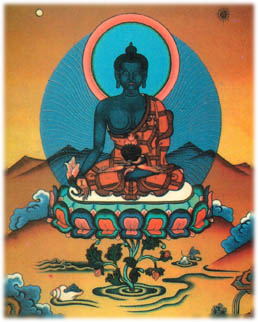 |
| Buddha-healer |
Buddhism and Ayurveda
Buddhism has appreciated in India from 323 BC. er. in 642 AD. er.Famous sage of Mahayana Buddhism, Nagarjuna wrote a commentary on the works of Ayurvedic and did much to bring this science to the extent possible, to all people. On the streets were grown medicinal plants, ayurvedic built hospitals and universities. Was carried out systematization of Ayurvedic treatments.
Ayurvedic theory tridoshi derives from the concept of three primary elements of the universe. The three doshas - vata (wind), pitta (bile) and kapha (phlegm) - correspond to the three primary element: air, fire and water. Buddhist medicine is based on the theory of 4 elements of the universe (to the listed item is added to the earth).
Buddhist missionaries were sent to Rome, Greece and China. It is also widely developed veterinary medicine. Who treated the elephants were calledhastivaydi, and who treated the horses were called ashvavaydi. The science of plant disease called vriksha-Ayurveda.
Nagarjuna laid the foundation rasashastry (Ayurvedic alchemy). Mystics have occupied a special preparation of mercury, sulfur and other nutrients.The value of mercury was so high that rasashastra evolved into a separate branch of mystical knowledge ("race" - "Mercury", "Shastra" - "science").There are many works on rasashastre: "Rasa ratna samuchhaya", "Race tharangini", "Race Ratnakara and others.
Ayurvedic Universities
In the history of Ayurveda, there are three large university, which taught astronomy, mathematics, medicine and philosophy:
- Benaressky University - on the banks of the Ganges in Varanasi - VI century BC. er.
 |
| Quay Ganges in Varanasi (Benares city in the Middle Ages, the Kashi in ancient times) |
- University of Takshashile - on the shore Dzhelluma (now the territory of Pakistan) - VI century BC. er.
- University at Nalanda - in Bihar - II-XII centuries. Mr. er. (In one document recorded 1,500 teachers and 10,000 students)
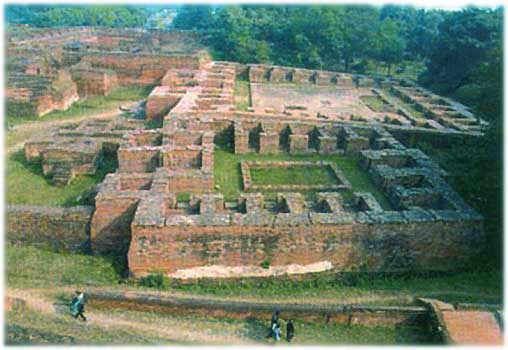 |
| The ruins of Nalanda University |
Kerala Ayurvedic tradition
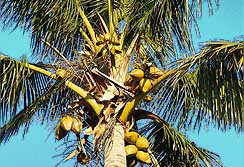
Dosanskritskaya era
Many researchers believe that Kerala had belonged to the African continent and has been linked with him through the many small islands.Proponents of the Aryan-Dravidian concept believe that this part of the world belonged dravidiytsam. Tradition says sage Parasurama - the incarnation of Vishnu, who established the dominance of the Dravidian on this earth. Militant appears to pacify Parasurama puffed Kshatriyas, who began to oppress the brahmanas. The main achievement of Parasurama - the victory over the cruel king of the thousand hayhayev Kartavirey Arjuna, who seized power over the world and persecute the Brahmins.
History shows that Kerala had longstanding trade relations with Persia and Egypt, and even the Chinese. Such a highly social community certainly has, and good medical infrastructure, which was later integrated with the Sanskrit Ayurvedic tradition of the North.
 |
Sanskrit era
It is hard to say for sure when the Sanskrit and Vedic culture came to Kerala. But that was obviously after the Aryan period of history. Have survived Malayalam and Tamil languages originated from a common proto-language, similar to the Tamil (Dravidian). According to some historians, Sanskrit came to Kerala from the outside. Until now, in Kerala there is a unique system of Toxicology (vishachikitsy), treatment of smallpox and other infectious diseases, marmachikitsa and treatment of elephants (gadzhachikitsa). Such medicines to treat fever, epilepsy and other diseases, such as gorochanadi kompanchade, except Kerala, the more unknown anywhere else. Acharya Kerala practiced shodhana therapy, modification of which were dhara, pizhchichila, ndzhavarakizhi. Under the influence of Buddhism, many temples of Kerala have turned to medical centers. Marco Polo was impressed by the big scholarship Kerala doctors and astrologers. In a Dutch study "Hortus Malabaricus" (1686-1703 years., Amsterdam) also notes the importance of Kerala Vaidya (physician). Some of the special methods of Kerala doctors: ndzhavarakizhi, annalapanama, pichila, Dhar and shirolepa.
 |
In the modern world, Ayurveda is increasing in popularity, more and more because of its holistic (holistic) approach to nature, the human body and high spirituality. Forms of Ayurvedic living arrangement as an integral part of millions of people around the world.















No comments:
Post a Comment